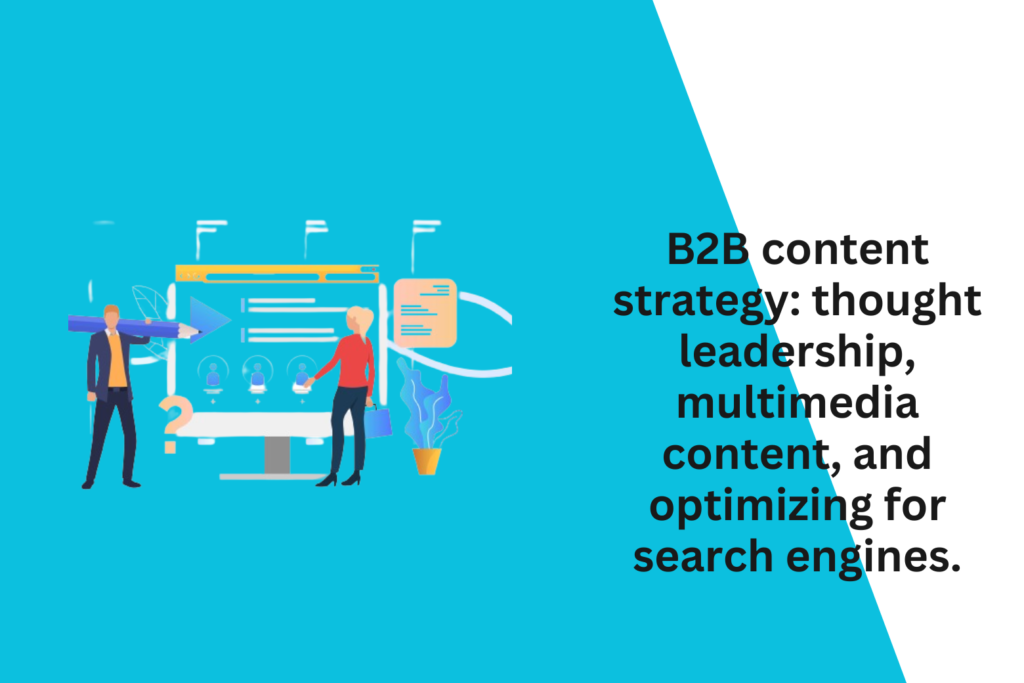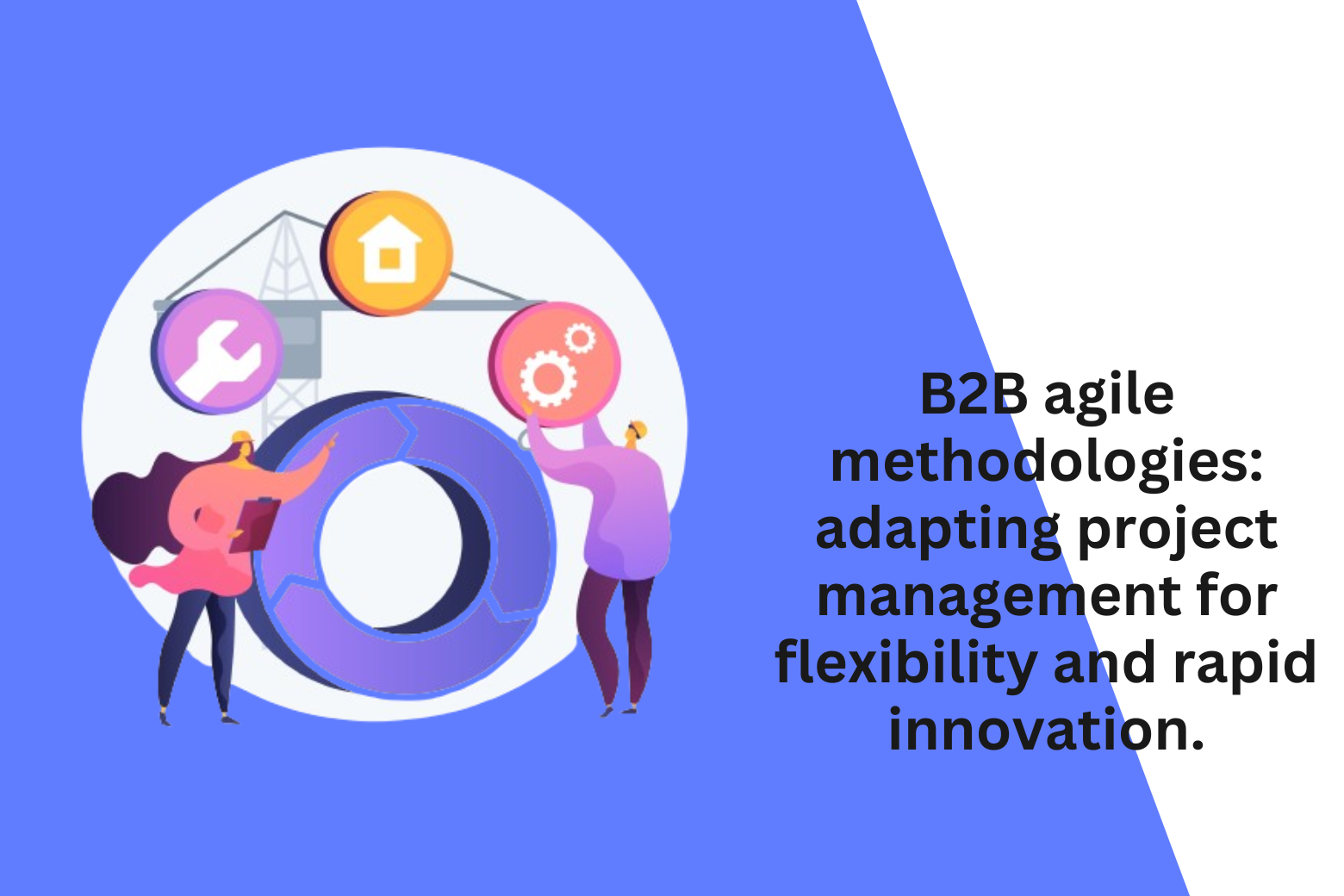
Developing an effective B2B content strategy involves creating valuable, relevant, and engaging content that resonates with your target audience. Here’s an exploration of key elements in a B2B content strategy, focusing on thought leadership, multimedia content, and optimizing for search engines:
1. Thought Leadership:
Content Alignment with Industry Trends:
- Opportunity: Stay abreast of industry trends, challenges, and emerging technologies. Create content that addresses these topics, positioning your brand as a thought leader in the industry.
- Challenge: Consistently identifying and addressing relevant industry trends requires ongoing research and analysis.
Authoritative Content Creation:
- Opportunity: Develop in-depth, authoritative content that showcases your expertise. This can include whitepapers, research studies, and comprehensive guides.
- Challenge: Balancing depth with accessibility to ensure content is both authoritative and engaging for a broad audience.
Collaboration and Networking:
- Opportunity: Collaborate with industry influencers, experts, and peers to co-create content. This not only broadens your reach but also adds credibility to your thought leadership efforts.
- Challenge: Building and maintaining collaborative relationships may require dedicated efforts and relationship-building strategies.
Regular Publication Schedule:
- Opportunity: Maintain a consistent publishing schedule to keep your audience engaged and demonstrate a commitment to thought leadership.
- Challenge: Consistent content creation requires careful planning, resource allocation, and adherence to deadlines.
2. Multimedia Content:
Diversification of Content Formats:
- Opportunity: Utilize various content formats such as videos, podcasts, infographics, and webinars to cater to different preferences and learning styles.
- Challenge: Ensuring a cohesive brand message across diverse content formats while adapting to the strengths and limitations of each.
Visual Storytelling:
- Opportunity: Leverage visual content for storytelling. Infographics, charts, and images can enhance the understanding of complex topics.
- Challenge: Striking the right balance between visual appeal and conveying detailed information effectively.
Interactive Content:
- Opportunity: Create interactive content such as quizzes, calculators, and assessments to engage your audience actively.
- Challenge: Developing interactive content may require specialized skills and tools, and measuring its effectiveness can be more complex.
Podcasting and Webinars:
- Opportunity: Explore podcasting and webinar formats to deliver in-depth discussions, interviews, and insights in a conversational style.
- Challenge: Ensuring high-quality production and promoting these formats effectively to reach the target audience.
3. Optimizing for Search Engines:
Keyword Research and Strategy:
- Opportunity: Conduct thorough keyword research to understand the terms and phrases your audience uses. Develop a content strategy that integrates relevant keywords naturally.
- Challenge: Adapting to evolving search algorithms and staying updated with industry trends in SEO.
Content Structure and Readability:
- Opportunity: Structure your content with headings, subheadings, bullet points, and concise paragraphs for improved readability. This contributes to better search engine rankings.
- Challenge: Balancing readability with the need for comprehensive and detailed content can be a delicate task.
Quality Backlink Building:
- Opportunity: Earn high-quality backlinks by creating valuable content that others in your industry find worth referencing.
- Challenge: Building backlinks requires outreach, relationship-building, and creating content that genuinely adds value to your audience.
Performance Analytics:
- Opportunity: Utilize analytics tools to track the performance of your content, including page views, time on page, and conversion rates.
- Challenge: Interpreting and acting upon analytics data to continuously optimize content performance.
Mobile Optimization:
- Opportunity: Optimize your content for mobile devices to cater to the increasing number of users accessing content on smartphones and tablets.
- Challenge: Ensuring a seamless and user-friendly experience across various devices and screen sizes.
In conclusion, a robust B2B content strategy combines thought leadership, multimedia content, and optimization for search engines. By consistently delivering valuable insights, engaging content formats, and aligning with search engine best practices, businesses can establish themselves as industry leaders and effectively reach and resonate with their target audience. Adaptability and a commitment to continuous improvement are essential in navigating the evolving landscape of B2B content marketing.



